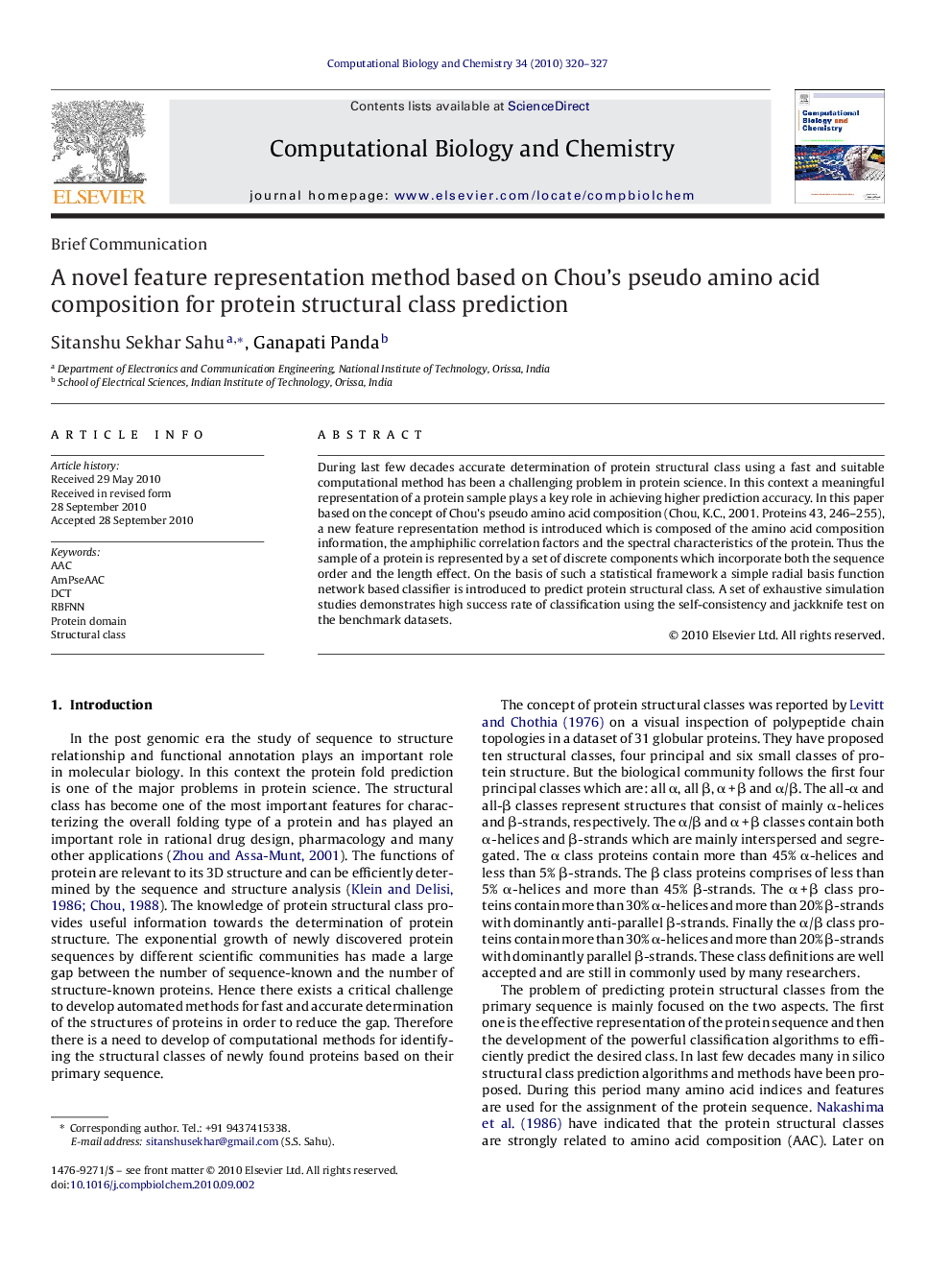| Article ID | Journal | Published Year | Pages | File Type |
|---|---|---|---|---|
| 15288 | Computational Biology and Chemistry | 2010 | 8 Pages |
During last few decades accurate determination of protein structural class using a fast and suitable computational method has been a challenging problem in protein science. In this context a meaningful representation of a protein sample plays a key role in achieving higher prediction accuracy. In this paper based on the concept of Chou's pseudo amino acid composition (Chou, K.C., 2001. Proteins 43, 246–255), a new feature representation method is introduced which is composed of the amino acid composition information, the amphiphilic correlation factors and the spectral characteristics of the protein. Thus the sample of a protein is represented by a set of discrete components which incorporate both the sequence order and the length effect. On the basis of such a statistical framework a simple radial basis function network based classifier is introduced to predict protein structural class. A set of exhaustive simulation studies demonstrates high success rate of classification using the self-consistency and jackknife test on the benchmark datasets.
Graphical abstractFigure optionsDownload full-size imageDownload as PowerPoint slideResearch highlights▶ Knowledge of protein structural class is important for determination of protein structure. ▶ Effective representation of protein sequence and development of powerful classifier is necessary. ▶ The DCTAmPseAAC representation captures features more relevant to protein structure. ▶ The RBFNN found to be a good classifier in structural class prediction.
